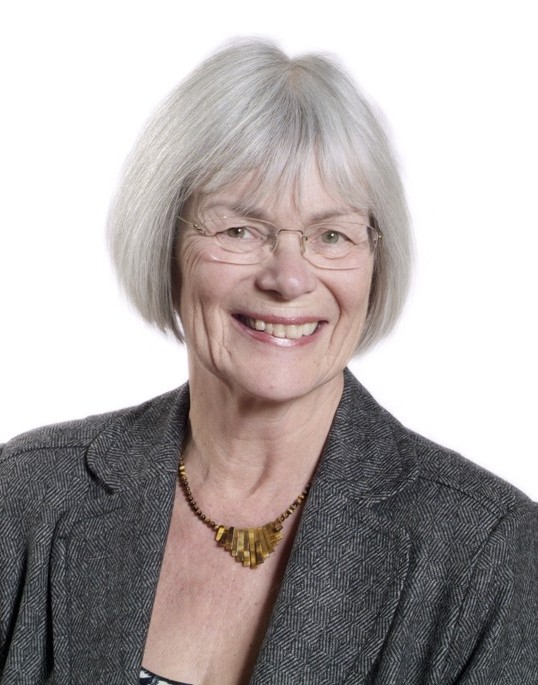The action plans must be followed
If we continue at the current pace, it will take 75 years before half of the senior academic positions are held by women. Norwegian Minister of Research and Higher Education Tora Aasland believes the institutions have a duty to adopt action plans that speed up the progress.

At least 75 percent of the professors at Norwegian universities and university colleges are men. In spite of this, a review conducted in 2010 by Gender Balance in Research – Norway revealed that only half of the university colleges in Norway have updated action plans for gender equality. Earlier this year the Committee for Gender Balance in Research (KIF Committee) alerted the Ministry of Education and Research to this situation.
“Action plans make the institutions more aware of gender equality. They are excellent tools which are relatively easy to draw up. But then, of course, they must be followed,” says Aasland.
Reprimanded by the ministry
She says that the ministry has contacted the educational institutions that have not followed up their own action plans. The KIF Committee’s concerns were also discussed at the management meetings of the ministry’s subordinate agencies. In addition, Aasland says that these same educational institutions have received a letter from the ministry that requires them to rectify the situation.
“All the institutions are required to draw up action plans,” says Aasland.
She emphasizes that ultimately this is a matter of personnel policy, since it is the responsibility of the educational institutions to support their female employees and ensure their professional development.
“What other kinds of measures has the ministry established to increase the proportion of women in the highest academic positions”?
“We have several measures in place and we do what we can to increase the percentage of female professors. Among other things, we have financial resources that are used to stimulate and strengthen the expertise of the leadership already in place. We also have a gender equality award that we have presented to the educational institutions every year since 2007, but to be perfectly honest, interest in this award is lukewarm.”
Quotas not permitted
“Is the call to strengthen women’s position in academia taken seriously or is it perceived as nagging?”
“We are over the days when such things were ridiculed. There will always be counter forces, but in my experience there is agreement across party lines, including in academia, that gender equality is an important value. I believe we are taken seriously when we make such demands, not least because we see it has worked in the business sector where the boards of companies must be comprised of at least 40 percent women. We need to use this momentum, even though we cannot establish quotas in the same way in academia,” says Aasland.
After the EFTA Surveillance Authority decided in 2003 that Norway could not earmark positions for women as allowed under the Norwegian Act relating to universities and university colleges, the Norwegian Government had to discontinue the practice. Since that time, both Norway and the EU have incorporated the UN Convention on All Forms of Discrimination Against Women into their legislation. Now Aasland hopes that the EU will change its position in the future.
“The decision prevents us from enacting quotas, but I still believe that quotas are important. However, it is not the right time to pick up the gauntlet again,” says Aasland.
Even so, she says that she is working with her colleagues in Europe and the EU parliament to pursue the issue again. Although the use of quotas is not permitted, this does not mean either that Norway lacks national instruments to achieve gender equality goals.
“We cannot give resources directly to women in higher positions, but we can give them to the institutions. And we do this in conjunction with the Research Council: NOK 10 million is awarded to institutions that seek to increase the proportion of women in upper-level positions,” says Aasland, and adds that both the Ministry of Education and Research and the Research Council have high aspirations for placing more women in higher positions in academia.
Both structure and family policy
“During the recent meeting on gender equality in academia at the University of Oslo, some of the employees said that a working environment characterized by overwork and burned-out supervisors does not exactly entice women to take on these positions. Does this situation worry you?”
“These kinds of feelings spread quickly among employees and are regrettable. But the solution to their complaints lies with the institutions themselves,” says Aasland, who adds that the Ministry of Education and Research has addressed the problem of the large number of temporary positions in academia, which primarily impacts women.
“Why are there so few women in the highest academic positions?”
“Structural mechanisms have prevented women from getting these jobs or positions, even though more women than men pursue a higher education,” says Aasland. She goes on to explain that there are many reasons for this:
“We must not forget that the competition for these positions is keen. Many men have built up their careers over a long period of time, and they do not take kindly to being passed by for the promotion they have been waiting for. There are more men than women in the career queue. This is also related to family policy, where we still have a job to do and where the daddy quota is important,” says Aasland.
She also points out that more men than women sit on the committees that take decisions on hiring.
“I also think that women feel pressured by both the private sphere and society at large, and choose predictable, high-paying professions. It is still the case that the practical responsibility for caring for children or parents falls mostly on women. Women need to let men become more active,” says Aasland. She believes that we need a change in attitude on the part of both women and men.
Translated by Connie Stultz.
